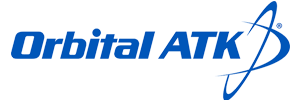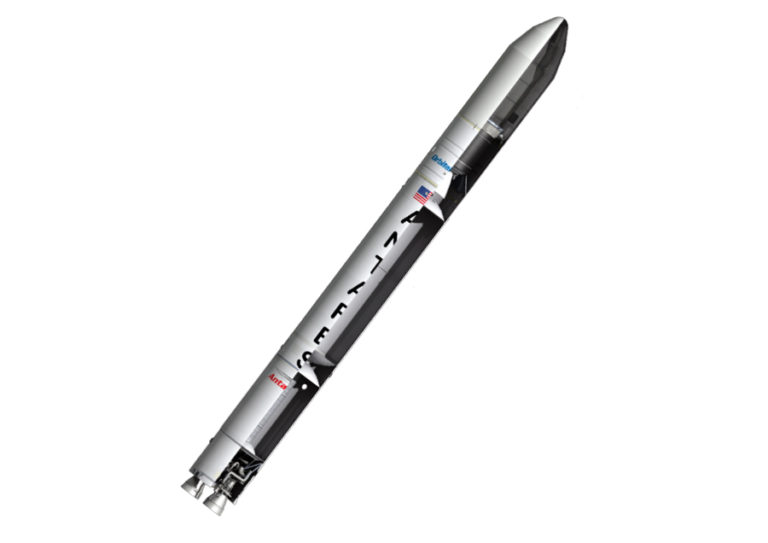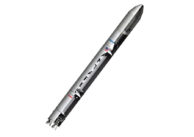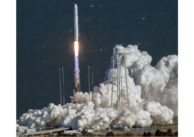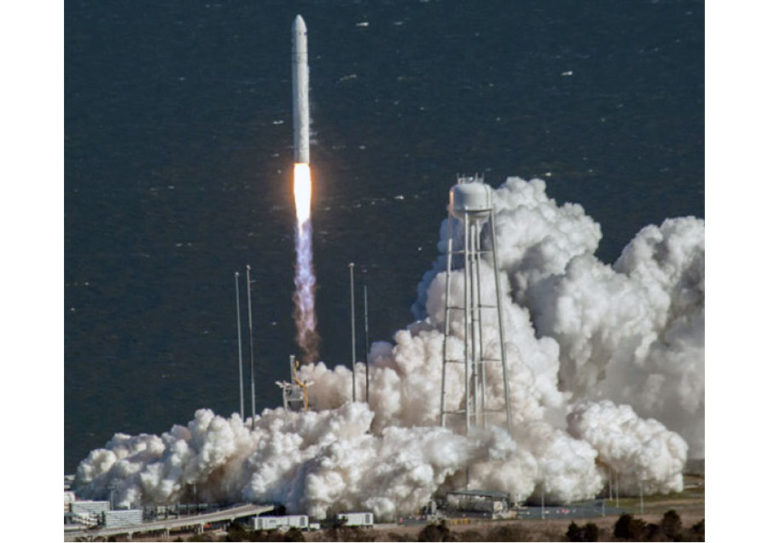Back
Designed to provide responsive and low-cost access to space, Antares is a two-stage vehicle (with optional third stage) that provides low-Earth orbit (LEO) launch capability for payloads weighing up to 8,000 kg. Internally funded by Orbital ATK, Antares completed a risk reduction mission and a demonstration of commercial re-supply services for the International Space Station (ISS) under a NASA Commercial Orbital Transportation Services (COTS) agreement in 2013. Orbital ATK commenced delivery of cargo to the ISS under the NASA Commercial Resupply Services (CRS) contract in 2014.
The Antares launch system utilizes Orbital ATK's proven MACH avionics system and many management approaches, engineering standards, production and test processes common to Orbital ATK’s family of successful small-class Pegasus and Minotaur launch vehicles. The Antares design has been upgraded with newly-built RD-181 first stage engines to provide greater payload performance and increased reliability. The company is currently targeting a return to flight in 2016 with a total of 6 missions thru 2018 to fulfill the company’s CRS1 agreement with NASA to deliver supplies to the ISS. Orbital ATK recently was awarded the CRS2 contract which includes at least six missions starting in 2019.
System Features Include:
Antares
Designed to provide responsive and low-cost access to space, Antares is a two-stage vehicle (with optional third stage) that provides low-Earth orbit (LEO) launch capability for payloads weighing up to 8,000 kg. Internally funded by Orbital ATK, Antares completed a risk reduction mission and a demonstration of commercial re-supply services for the International Space Station (ISS) under a NASA Commercial Orbital Transportation Services (COTS) agreement in 2013. Orbital ATK commenced delivery of cargo to the ISS under the NASA Commercial Resupply Services (CRS) contract in 2014.
The Antares launch system utilizes Orbital ATK's proven MACH avionics system and many management approaches, engineering standards, production and test processes common to Orbital ATK’s family of successful small-class Pegasus and Minotaur launch vehicles. The Antares design has been upgraded with newly-built RD-181 first stage engines to provide greater payload performance and increased reliability. The company is currently targeting a return to flight in 2016 with a total of 6 missions thru 2018 to fulfill the company’s CRS1 agreement with NASA to deliver supplies to the ISS. Orbital ATK recently was awarded the CRS2 contract which includes at least six missions starting in 2019.
System Features Include:
- Incorporates both solid and liquid stages and flight-proven technologies
- Provides substantial payload performance into a variety of low inclination low-Earth and sun synchronous orbits and interplanetary trajectories
- 3.9 meter fairing accommodates large payloads
- Streamlined vehicle/payload integration and testing reduces time from encapsulation to lift-off
- Capable of launching single and multiple payloads.
- Initial launch capability from Wallops Flight Facility (WFF), Virginia
- Also compatible with the Western Range at Vandenberg Air Force Base (VAFB), Cape Canaveral Air Force Station (CCAFS) and Kodiak Launch Complex (KLC)

